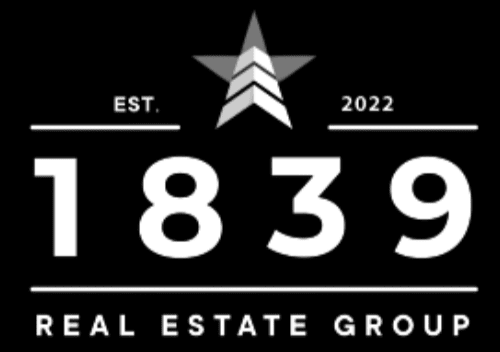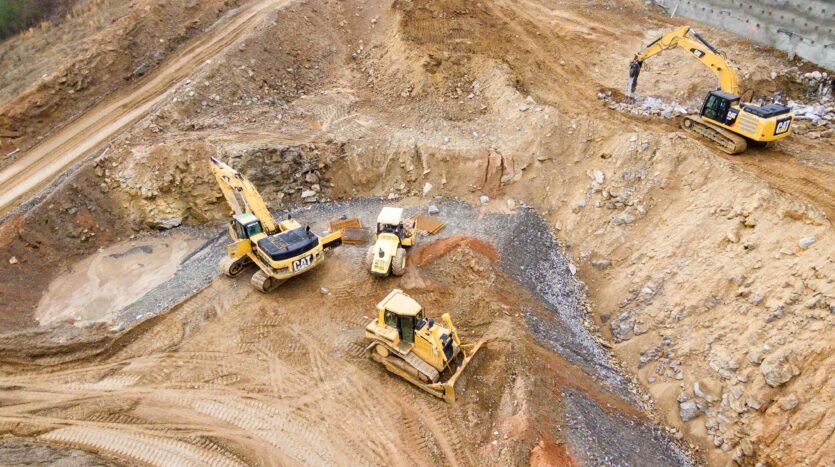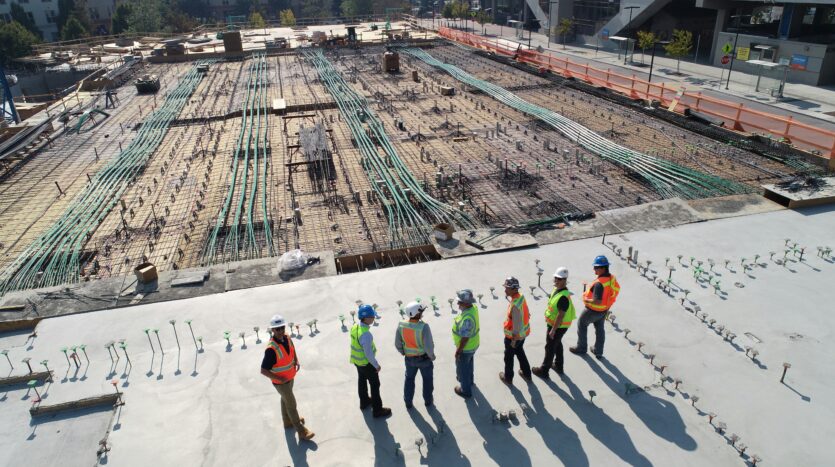Unlocking the Potential: Understanding Zoning Laws for Commercial Real Estate
Land Investment Overview
Current Real Estate Trends
Understanding current real estate trends is crucial for making informed investment decisions. One key trend is the increase in new residential construction. In June 2024, new residential construction showed a 3.0% increase with privately-owned housing starts at a seasonally adjusted annual rate of 1,353,000, up from the revised May 2024 estimate of 1,314,000. This uptick indicates a healthy demand for housing, which can drive commercial real estate investments.
Another important trend is the rise in business formations. In June 2024, there was a 1.7% increase in total U.S. business applications compared to May 2024 (Census.gov). This growth suggests a robust economic environment, encouraging more commercial real estate development to meet the needs of new businesses.
However, it’s important to note that construction spending for May 2024 was 0.1% below the revised April 2024, with total construction activity at $2,139.8 billion. This slight decline highlights the importance of strategic investment in commercial real estate to ensure optimal returns.
| Metric | June 2024 | May 2024 |
|---|---|---|
| New Residential Construction (Seasonally Adjusted Annual Rate) | 1,353,000 | 1,314,000 |
| Total U.S. Business Applications | +1.7% | N/A |
| Construction Spending | $2,139.8 billion | $2,141.8 billion |
For more details on market trends, visit our article on market trends for commercial land in Austin.
Commercial Land Listings
When considering land investment opportunities, it’s essential to explore available commercial land listings. Platforms like LoopNet offer a comprehensive range of commercial lots, from 0.67 acres to 97 acres, catering to diverse development needs (LoopNet). LoopNet is the leading online commercial real estate marketplace, boasting approximately 100,000 land listings for sale. The platform attracts more brokers and property owners than any other, making it an invaluable resource for investors.
Here are some examples of commercial land listings available on LoopNet:
| Property Name | Location | Size (Acres) | Price |
|---|---|---|---|
| Austin Business Park | Austin, TX | 50 | $5,000,000 |
| Downtown Development Lot | Austin, TX | 10 | $3,000,000 |
| Suburban Retail Site | Austin, TX | 25 | $4,500,000 |
| Industrial Expansion Lot | Austin, TX | 97 | $9,000,000 |
These listings showcase the variety of options available for commercial development in Austin and across Texas. To learn more about identifying prime commercial land, visit our guide on how to identify prime commercial land for sale.
Exploring these trends and listings can provide valuable insights for investors and business owners looking to purchase land and commercial properties for development. For more information, check out our article on land investment opportunities in Austin.
Development Opportunities
Growth Potential in Austin
Austin, Texas, continues to experience significant growth, making it a prime location for commercial real estate investment. With new residential construction showing a 3.0% increase in June 2024 and privately-owned housing starts at a seasonally adjusted annual rate of 1,353,000 (Census.gov), the demand for commercial spaces is rising. Investing in Austin’s commercial land offers various opportunities for business owners and investors alike.
The 1839 Real Estate Group operates in key locations such as Buda and Austin, providing market insights and services related to commercial real estate development. The diverse range of commercial lots available, from 0.67 acres to 97 acres (LoopNet), presents numerous possibilities for different types of developments, including retail, industrial, and mixed-use projects.
For those interested in exploring more about land investment opportunities in Austin, understanding the growth potential in this area is crucial. Austin’s expanding infrastructure, increasing population, and vibrant economy make it an excellent choice for commercial real estate investments.
Zoning Laws Impact
Understanding zoning laws for commercial real estate is vital for successful development projects. Zoning laws dictate how a piece of land can be used, influencing the type of buildings that can be constructed, their size, and their purpose. For those looking to invest in Austin, familiarizing themselves with these regulations is essential to ensure compliance and maximize the potential of their investments.
Zoning laws can affect various aspects of development, including:
- Land Use: Determines whether the land can be used for commercial, residential, industrial, or mixed-use purposes.
- Building Size and Height: Regulations on the maximum allowable size and height of buildings.
- Setbacks and Lot Coverage: Rules on how far buildings must be set back from property lines and the percentage of the lot that can be covered by structures.
- Parking Requirements: Mandates on the number of parking spaces required for different types of developments.
For a comprehensive understanding of zoning laws and their impact on commercial real estate, platforms like LoopNet offer meticulously researched content and professional-grade resources. These tools can help investors and developers navigate zoning regulations and make informed decisions.
| Zoning Factors | Description |
|---|---|
| Land Use | Specifies if land is for commercial, residential, industrial, or mixed-use. |
| Building Size & Height | Limits on the size and height of buildings. |
| Setbacks & Lot Coverage | Rules on building distance from property lines and lot coverage. |
| Parking Requirements | Mandates for the number of required parking spaces. |
Investors and developers can leverage this information to identify prime locations for their projects. For more details on how to identify prime commercial land for sale, visit our detailed guide.
By understanding zoning laws, investors can make strategic decisions to maximize their return on investment. For additional tips on optimizing your commercial land investments, check out our article on how to maximize ROI from commercial land investments.
Investment Strategies
Understanding Market Dynamics
As we navigate the complexities of commercial real estate investment, it’s crucial to understand the market dynamics that influence land investments, particularly in Texas. Tighter financial conditions and uncertainties about future economic and financial conditions have continued to subdue activity in Texas rural land markets through the first quarter of 2024.
Analyzing sales data from 2022 to 2023 across Texas’ 33 Land Market Areas (LMAs) reveals a mix of gains and losses in prices statewide. The quarterly median was up 4 percent overall, with eleven LMAs showing falling prices, but only one indicated a statistically verifiable trend. Conversely, eleven LMAs with price increases showed a verifiable trend. Every LMA except Canadian Breaks saw annualized declines in sales volumes (Texas Real Estate Research Center).
| Year | Total Acres Sold | Price Per Acre | Sales Volume Decline |
|---|---|---|---|
| 2022 | 719,509 | $4,448 | – |
| 2023 | 279,509 | $4,670 | -44.6% |
(Source: Texas Real Estate Research Center)
Factors Influencing Land Prices
Understanding the factors influencing land prices is essential for making informed investment decisions. In 2023, the fourth quarter saw annual sales volume in Texas rural land markets slip by 44.6 percent year-over-year, with a total of 279,509 acres changing hands, down 61.2 percent over 2022. Despite the decline in sales volume, prices rose 5 percent to $4,670 per acre statewide from year-end 2022 through year-end 2023 (Texas Real Estate Research Center).
Several key factors influencing land prices in Texas include:
- Economic Conditions: Tighter financial conditions and economic uncertainties significantly impact market activity.
- Location and Accessibility: Proximity to urban centers and ease of access can drive up land prices.
- Zoning Laws and Regulations: Understanding zoning laws for commercial real estate is crucial. Zoning can affect the type of developments permitted on the land, influencing its value. For more insights, visit our guide on understanding zoning laws for commercial real estate.
- Supply and Demand: The balance between available land and the demand for it plays a significant role in price fluctuations.
- Infrastructure Developments: Future infrastructure projects can enhance the value of land. Explore how these projects impact land value in our article on future infrastructure projects impacting land value in Texas.
Across Texas’ seven regions, prices for rural land continued to increase, ranging from 0.6 percent in the Gulf Coast–Brazos Bottom region to a 23.6 percent jump in Far West Texas. However, every region saw a decline in total acres sold, with West Texas experiencing the steepest decline at 74.4 percent (Texas Real Estate Research Center).
| Region | Price Increase | Decline in Acres Sold |
|---|---|---|
| Gulf Coast–Brazos Bottom | 0.6% | – |
| Far West Texas | 23.6% | -74.4% |
(Source: Texas Real Estate Research Center)
For more detailed strategies on investing in commercial land, consider exploring our articles on how to identify prime commercial land for sale and key factors to consider when purchasing commercial land. These resources will help you make informed decisions and maximize your investment potential.


